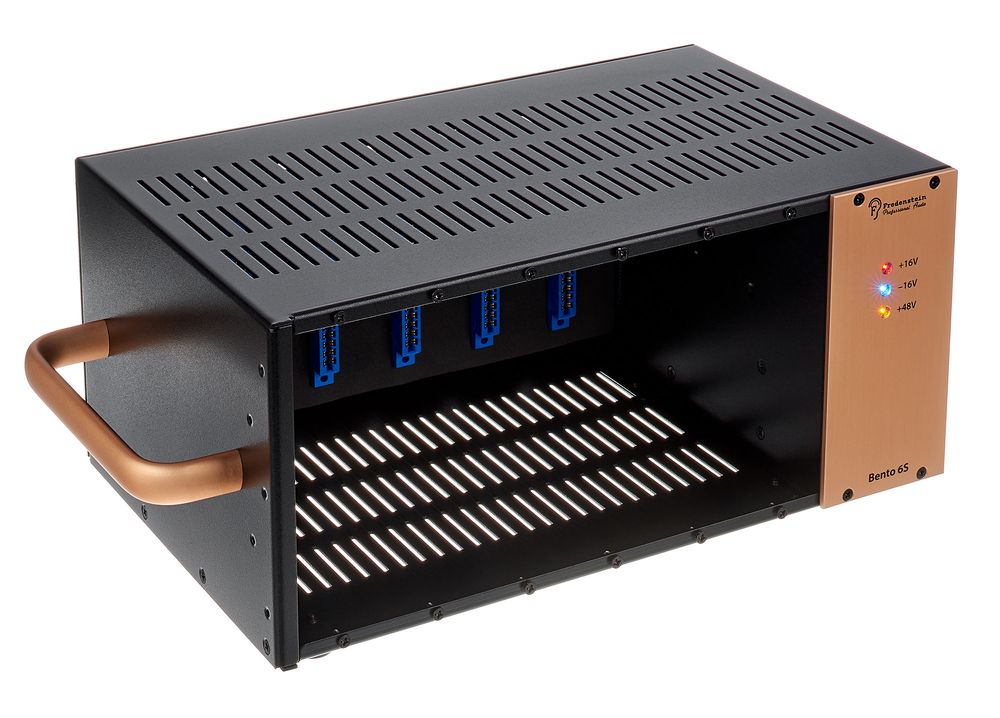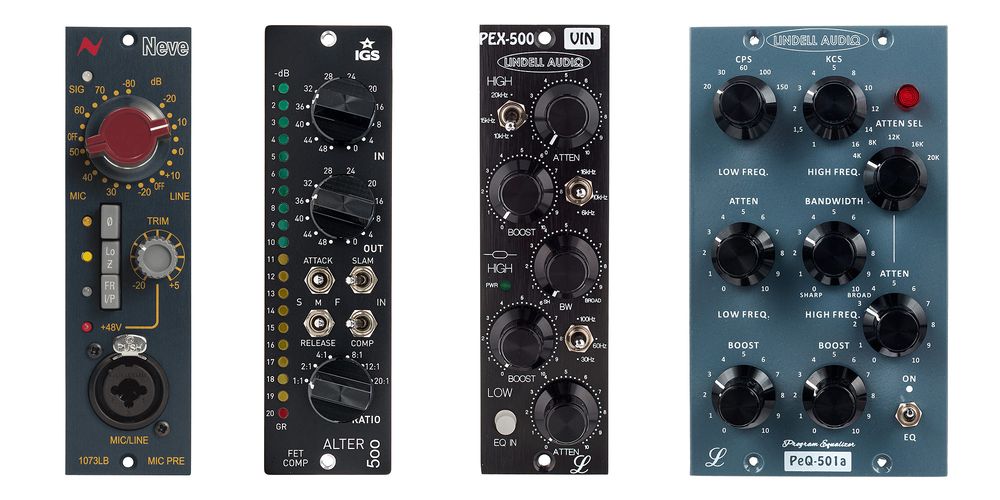6. Selection
One crucial aspect is the number of available slots. There are small carriers that can be transported in a backpack if needed. The upper limit is ten module slots because at this number, a module carrier still fits into the 19” format. It's essential to consider whether you intend to use the modules mainly in a fixed location or on the go. Some are versatile, allowing for the use of a handle or rack ears to firmly install them in a standard rack with "normal" equipment.
It's rare to see housings where cassettes are mounted horizontally instead of vertically. In a 19” enclosure, up to three "lying" modules can fit side by side. However, in this case, the labeling is rotated 90 degrees to the left, with very few manufacturers offering horizontal labeling as an option instead of vertical.
If an internal power supply is built into the module carrier, it's usually indicated by a section on the front left or right, where modules cannot be installed.
While there are guidelines for the voltage that housing power supplies should provide and how much power modules can consume, there are differences in housing power supplies. This is especially important when using many modules that require a lot of voltage during signal peaks. If the plan is to fill an entire rack with microphone preamps, it's advisable to look for ones with a high current rating for the individual slots (well over 250 mA) and a generously dimensioned power supply. Some housings offer monitoring of the power budget or separately switchable phantom power.
Many module carriers offer special features. This starts with the connections. Some allow additional inputs and outputs for each slot to enable more flexible routing. Others can relay signals from slot to slot to create a signal chain without the need for extensive cabling. It's also possible that a housing sums the signals from all slots—this can also potentially save inputs on the audio interface. For those working with a classic patchbay or a suitably equipped audio interface, choosing a housing with Sub-D connectors might be preferred. This allows eight modules to be directly connected via a practical multicore cable with a multipin connector.
There are even 500 series frames available that can accept signals via a digital interface, convert them to analog, process them with the modules, and convert them back into the digital domain. And that's not all: for instance, Cranborne integrates a comprehensive USB audio interface, while manufacturer WES allows for settings storage and total recall (of its own modules)!
What to Consider When Choosing a 500 Series Module?
Of course, devices are primarily selected based on whether they can deliver the desired sound quality, quality, and features—500 series modules are no exception. Due to the vast selection, you can choose from very transparent and analytical devices to heavily coloring and distinctive ones, covering the entire spectrum. Many 500 series users build a diverse toolkit over time to be sonically flexible. Examples include devices inspired by classics that often match or even exceed them in sound quality:
Examples include preamps in the style of a Neve 1073, limiters like the Urei 1176, and EQs following the Pultec principle.
Other parameters to consider include user ergonomics and, to some extent, appearance! Last but not least, price is often a deciding factor: modules are available for under 200EUR, while others can cost well over 2.000EUR. However, many excellent products from established brand manufacturers are available for around 500EUR.




